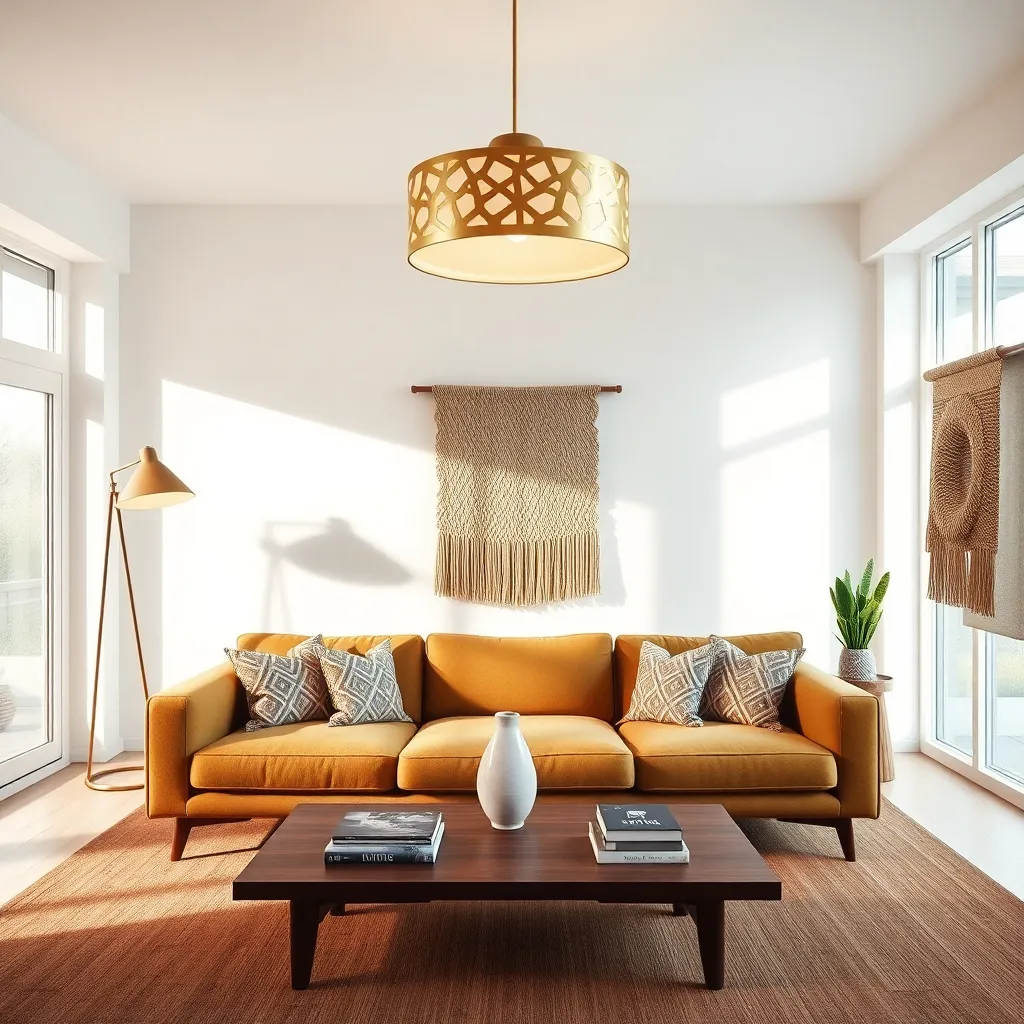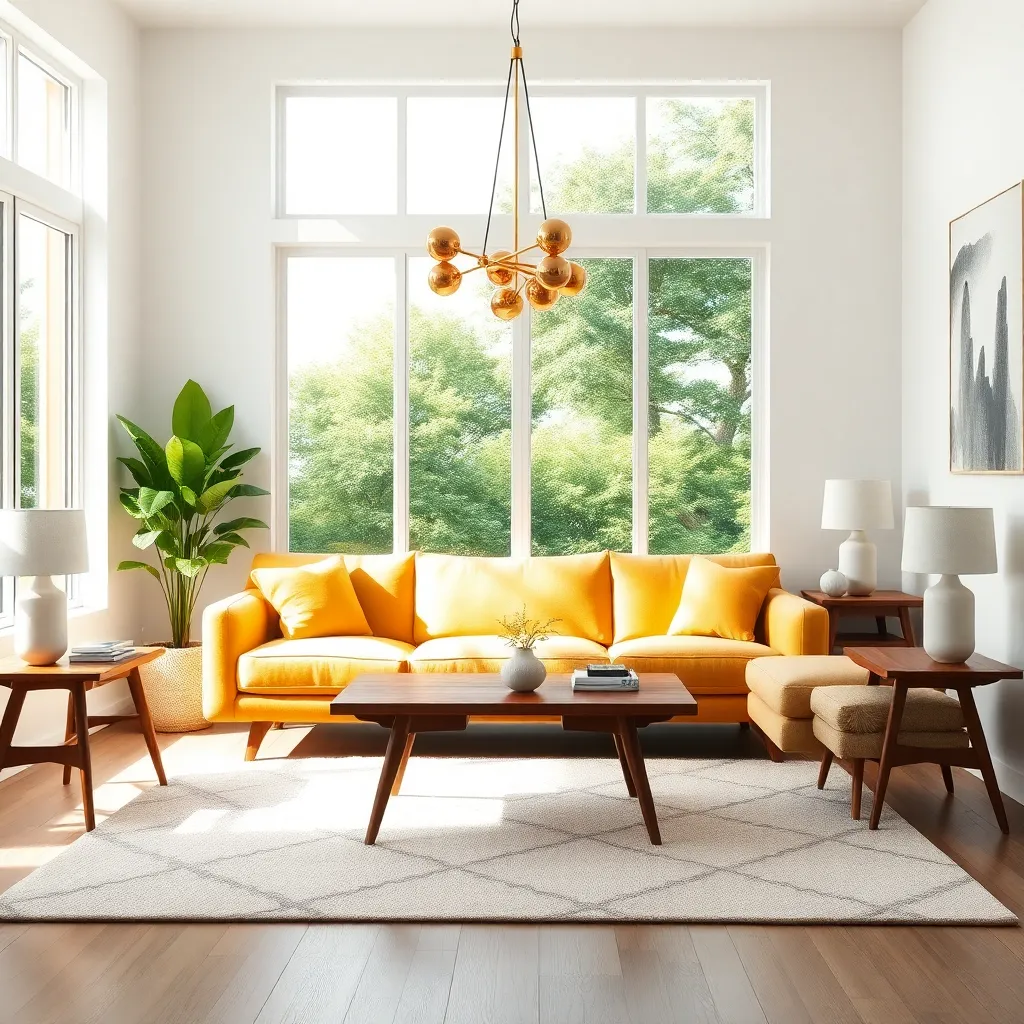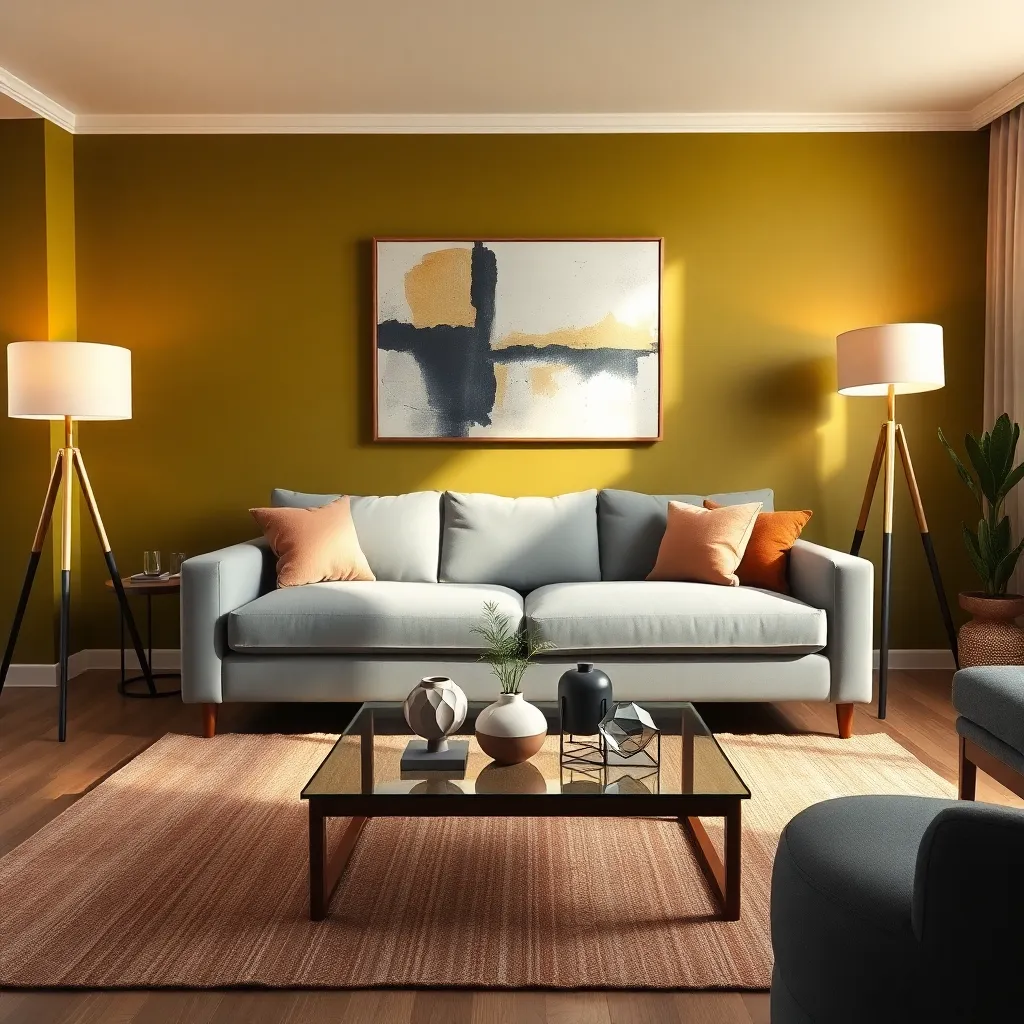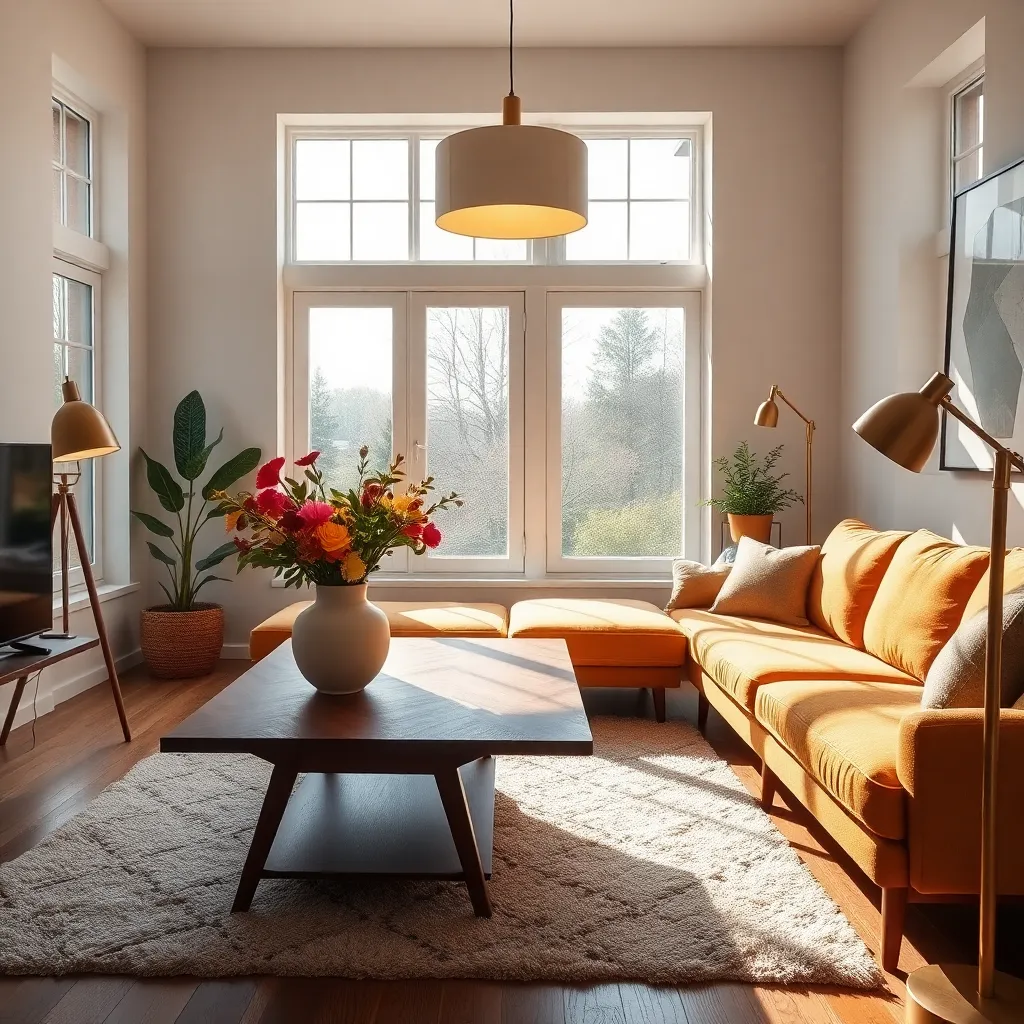Imagine stepping into a room where every element whispers sophistication, yet feels undeniably welcoming. This is the magic of mid-century modern lighting—a design trend that effortlessly balances form and function, transforming spaces with its elegant simplicity. Whether you’re a design novice or a seasoned decorator, understanding the nuances of this iconic style can significantly elevate your home’s ambiance. Not only does it draw inspiration from the past, but it also speaks to the contemporary desire for clean lines and minimalistic beauty.
Mid-century modern lighting is not just about illumination; it’s about setting the mood and making a statement. From the iconic sputnik chandeliers to the sleek, sculptural floor lamps, these pieces can serve as the centerpiece of a room or complement existing decor with their understated elegance. In this article, you’ll discover how to incorporate these timeless designs into your home, ensuring each room not only shines but also tells a story. We’ll explore the key characteristics that define this era’s lighting and offer practical tips for selecting pieces that align with your personal style.
For those embarking on their interior design journey, this guide will demystify the process, offering insights into what makes mid-century modern lighting so distinctive and beloved. Meanwhile, experienced decorators will find inspiration in the creative ways these fixtures can be used to enhance both traditional and contemporary spaces. By the end of this journey, you’ll not only have a deeper appreciation for mid-century modern lighting but also the confidence to integrate it into your home with flair and finesse. So, let’s turn the spotlight on this captivating design trend and illuminate the path to a more stylish living space.
Defining Mid-century Modern Lighting

Mid-century modern lighting is characterized by its sleek lines and innovative use of materials, making it a timeless choice for any room. To capture this style, consider lighting fixtures that feature materials like brass, wood, or glass, which not only illuminate but also serve as art pieces in your space.
Begin by selecting a statement piece, such as a Sputnik chandelier, which showcases the iconic starburst design associated with the era. Position it in a central location like over a dining table or in the living room to draw attention and create a focal point.
Pair your main fixture with complementary lighting options, such as arc floor lamps or wall sconces, to add layered lighting. This approach helps to build a more dynamic atmosphere while ensuring that the room is well-lit and functional.
For those looking to experiment further, consider incorporating lighting with bold colors or geometric shapes to add a playful touch to the design. Choose colors that either contrast or harmonize with your existing color scheme, such as a vibrant orange lamp in a room with neutral tones to create visual interest.
Iconic Lighting Designers and Pieces

In mid-century modern lighting, several designers have left an indelible mark with their iconic creations. George Nelson’s Bubble Lamps are a staple of this era, known for their soft glow and organic shapes, making them perfect for any living room or bedroom.
For an elegant touch, consider the works of Poul Henningsen, whose designs like the PH Artichoke lamp offer layered lighting that adds depth and sophistication. This piece is ideal above a dining table or as a statement fixture in a large foyer.
Another influential designer, Arne Jacobsen, brought us the AJ Lamp series, which features sleek lines and functional aesthetics. These lamps work exceptionally well in study areas or as bedside reading lights, where focused illumination is needed.
To complement these classic pieces, use a neutral color palette with accents of brass or chrome to enhance the vintage allure. Opt for materials like walnut or teak in your furniture to echo the warmth of mid-century design, while ensuring the lighting remains the centerpiece.
Choosing the Right Fixture Style

When selecting the right fixture style for your mid-century modern lighting, consider the scale and proportion of the space. Oversized pendants can make a bold statement in a dining room, while sleek, minimalist sconces offer subtle illumination in a hallway or bedroom.
Avoid choosing fixtures that overwhelm the room; instead, opt for designs that complement your existing furniture. For instance, a lamp with a brushed brass finish can beautifully echo gold accents on your coffee table or bookshelf, creating a cohesive look.
Color plays a vital role in fixture selection, too. Opt for warm metal tones like copper or brass to add a touch of elegance, or go for stark black and white fixtures for a more contemporary feel.
Advanced decorators might consider layering different light sources to add depth. Combine task lighting with ambient light to ensure functionality without sacrificing style. This layered approach not only enhances the room’s aesthetic but also creates versatility in how the space can be used.
Integrating Lighting with Modern Decor

Integrating lighting with modern decor requires a thoughtful approach to both function and style. Start by considering the natural light in your space and supplementing it with fixtures that enhance the room’s ambiance without overwhelming it.
For a clean and cohesive look, match your lighting fixtures with the existing color palette and materials in your room. For example, if you have a lot of natural wood elements, consider using lighting fixtures with wooden accents to maintain visual harmony.
Placement is key when integrating lighting into modern decor. Position floor lamps next to seating areas to create cozy reading nooks, and use pendant lights over dining tables to define the space and add focused illumination.
Advanced decorators can experiment with layering different types of lighting to create depth and interest. Combine overhead lighting with wall sconces or table lamps, ensuring each layer serves a specific purpose, whether for ambiance, task lighting, or highlighting architectural features.
Consider using dimmers to adjust the intensity of your lighting according to the time of day or activity. This flexibility allows you to transition seamlessly from bright, functional lighting during the day to a softer, more intimate atmosphere in the evening.
Maintaining Authenticity with Lighting

To maintain authenticity with lighting in a mid-century modern design, it’s crucial to focus on the simplicity and functionality that define the era. Start by selecting lighting fixtures with clean lines and organic shapes, such as a classic arc floor lamp or a saucer-shaped pendant light.
Consider using materials that were popular in the mid-century, like brushed brass, teak, or walnut, to add warmth and authenticity. These materials not only complement the style but also enhance the overall aesthetic by introducing subtle textures and tones that are pleasing to the eye.
Positioning is key in creating a cohesive look; place lamps where they provide both functional light and visual interest. You might place a statement lamp next to a vintage-inspired armchair, ensuring the scale of the lamp aligns with the furniture to maintain balance.
Color plays a significant role in achieving an authentic mid-century look. Opt for earthy tones or muted pastels in your lampshades to harmonize with the rest of your decor. This approach allows the lighting to blend seamlessly while still capturing attention as a stylish focal point.
- Choose lighting fixtures that feature geometric or asymmetrical designs.
- Incorporate multiple light sources, such as table lamps and pendant lights, to create layers of light.
- Pay attention to bulb selection; warm, soft lighting can enhance the cozy, inviting atmosphere typical of mid-century modern spaces.
Conclusion: Growing Success with These Plants
As we journeyed through the illuminating world of mid-century modern lighting, we uncovered five pivotal relationship concepts that light up the path to stronger connections. First, we explored how the art of balance, much like the harmonious design of these fixtures, is essential for maintaining equilibrium in relationships. Second, we delved into the importance of adaptability, drawing parallels to how versatile lighting can transform a space. Third, we highlighted intentionality, urging you to be deliberate in your actions and words, just as one would carefully select the perfect lighting piece. Fourth, we examined the power of communication, akin to the way lighting facilitates clarity and focus. Finally, we emphasized the role of authenticity, encouraging you to shine your true light in all your interactions.
As an actionable next step, take a moment to reflect on one area you can immediately enhance using these concepts, whether it’s through a heartfelt conversation or a small but meaningful gesture.
Bookmark this article now to revisit these insights and let them guide you as you nurture and grow your relationships. Remember, the future of your relationships is bright and promising when you actively light the way with intention and love.
